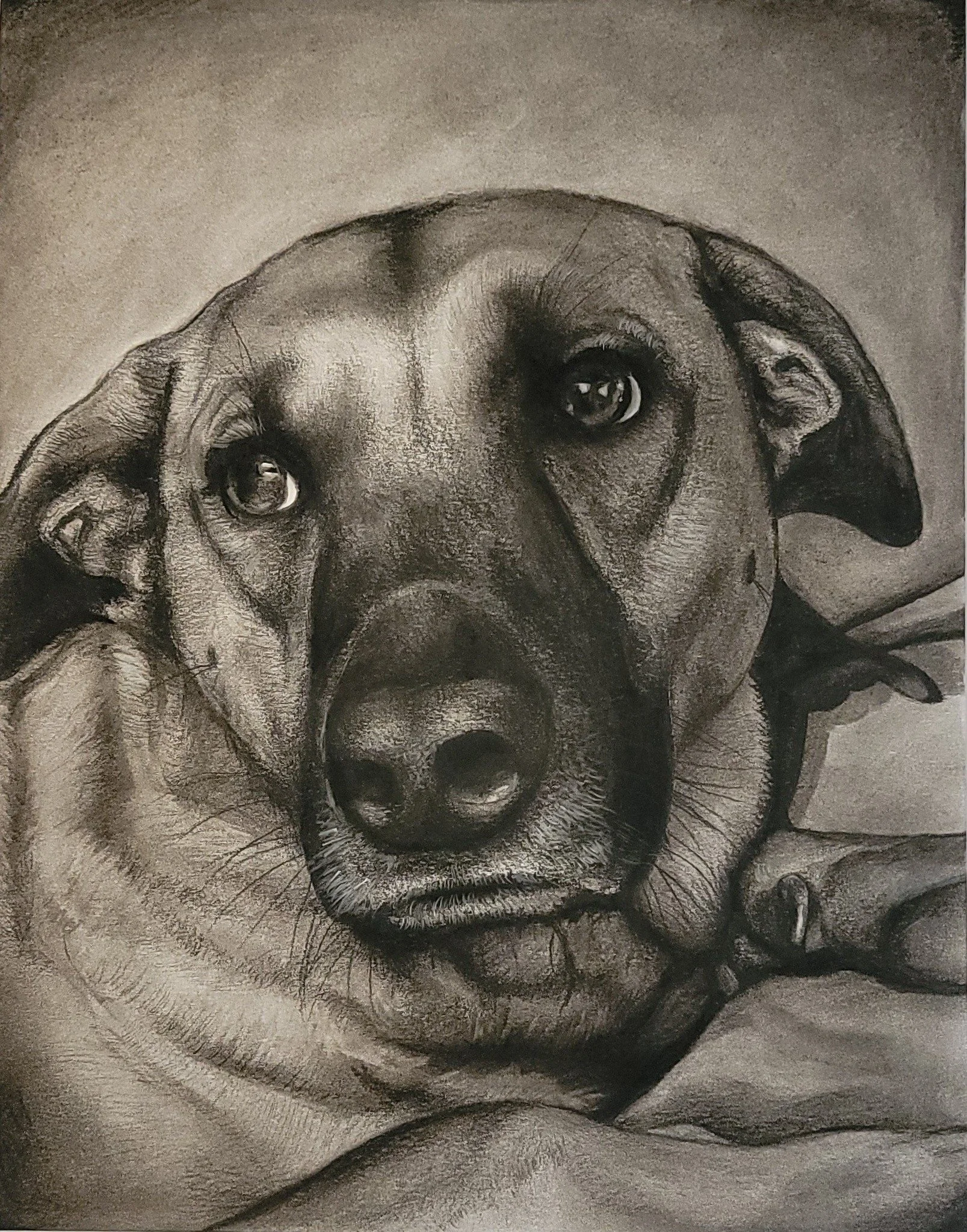Samantha Shaltz
Lab Manager/ Lab Research Analyst II
samantha.sliwa@duke.edu
Favorite Animal:
How did your career path lead you to Duke?
I always knew I wanted to be involved in genetics from a young age. I was lucky enough to take a genetics course in high school which truly got me hooked in the subject area. I attended Roanoke College, where I worked as an undergraduate research assistant studying mutagenesis and genetic screening using the fungal system Coprinus cinereus. After graduating with a major in Biology and minor in Art, I obtained an industry job in RTP testing for various infectious diseases. This lab shut down which is how I ended up with a position at Duke in 2012. For few years, I worked under Dr. David Goldstein in the Center for Human Genome Variation. Eventually, I ended up moving over to MGM working under Dr. Sue Jinks-Robertson for almost 9 years. It is in this lab that I was introduced to Dr. Asiya Gusa. It has been fantastic working alongside her for years, so needless to say, I was more than ecstatic to be given the opportunity to be a part of her new lab.
What do you like to do outside of lab? Hobbies? Interests?
Outside of lab, I am usually hanging out with my husband and our two kids. We have a 6-year-old and 4-year-old and they keep me moving to say the least. Life has been so much fun with them. We also have two very large dogs that keep us busy- especially one that is completely blind and tends to walk into everything. Life is certainly chaotic outside of lab but I wouldn’t change it for the world. Prior to having kids, I used to always be out camping and kayaking. I absolutely love being outdoors. My friends know I would take a tent over a hotel room any day. My husband and I used to spend entire days out on Falls Lake or Kerr Lake. Typically, we always fish from our kayaks which has proven to be a great way to catch some big fish! The kids have started to become very interested in fishing and camping as well so it has been very fun to watch them enjoy the same activities I love.
Art is a huge part of my life outside of lab. I had my own art business for a while and would sell at craft shows and online. Especially around the holidays, I used to paint a lot of custom pet portraits. I am particularly fond of acrylic painting and wood burning, though I love to dabble in all different types of art depending on my mood. One of my favorite traditions is entering my art in the NC State Fair. I have usually fared quite well – in wood burning especially, I placed in first three years in a row. In 2024, I placed 2nd in the fine art category for drawing (colored pencil drawing with the butterflies is shown below).
Publications
Zhu W, Zhang Y, Sahay H, Wasserman H, Afek A, Williams J, Shaltz S, Johnson C, Pinheiro K, MacAlpine DM, Weninger KR, Erie DA, Jinks-Robertson S, Gordân R. DNA mutagenesis driven by transcription factor competition with mismatch repair. Cell. 2025 Oct 2;188(20):5735-5747.e15. doi: https://doi.org/10.1016/j.cell.2025.07.003
Anna I. Mackey, Vesper Fraunfelter, Samantha Shaltz, John McCormick, Callan Schroeder, John R. Perfect, Cedric Feschotte, Paul M. Magwene, Asiya Gusa. Temperature and genetic background drive mobilization of diverse transposable elements in a critical human fungal pathogen. bioRxiv 2025.05.19.654958; doi: https://doi.org/10.1101/2025.05.19.654958
Cho JE, Shaltz S, Yakovleva L, Shuman S, Jinks-Robertson S. Deletions initiated by the vaccinia virus TopIB protein in yeast. DNA Repair (Amst). 2024 Mar 6;137:103664. doi: 10.1016/j.dnarep.2024.103664. Epub ahead of print. PMID: 38484460. https://pubmed.ncbi.nlm.nih.gov/38484460/
Samantha Shaltz, Sue Jinks-Robertson, Genetic control of the error-prone repair of a chromosomal double-strand break with 5′ overhangs in yeast, Genetics, Volume 225, Issue 1, September 2023, iyad122, https://academic.oup.com/genetics/article/225/1/iyad122/7221299
Williams JD, Zhu D, García-Rubio M, Shaltz S, Aguilera A, Jinks-Robertson S. Spontaneous deamination of cytosine to uracil is biased to the non-transcribed DNA strand in yeast. DNA Repair (Amst). 2023 Mar 29;126:103489. doi: 10.1016/j.dnarep.2023.103489. Epub ahead of print. PMID: 37018983. https://pubmed.ncbi.nlm.nih.gov/37018983/
Shaltz S, Jinks-Robertson S. Mutagenic repair of a ZFN-induced double-strand break in yeast: Effects of cleavage site sequence and spacer size. DNA Repair (Amst). 2021 Dec;108:103228. doi: 10.1016/j.dnarep.2021.103228. Epub 2021 Sep 16. PMID: 34601383; PMCID: PMC8616830. https://pubmed.ncbi.nlm.nih.gov/34601383/
Stantial N, Rogojina A, Gilbertson M, Sun Y, Miles H, Shaltz S, Berger J, Nitiss KC, Jinks-Robertson S, Nitiss JL. Trapped topoisomerase II initiates formation of de novo duplications via the nonhomologous end-joining pathway in yeast. Proc Natl Acad Sci U S A. 2020 Oct 27;117(43):26876-26884. doi: 10.1073/pnas.2008721117. Epub 2020 Oct 12. PMID: 33046655; PMCID: PMC7604471. https://pubmed.ncbi.nlm.nih.gov/33046655/
Gamble D, Shaltz S, Jinks-Robertson S. Recombinational Repair of Nuclease-Generated Mitotic Double-Strand Breaks with Different End Structures in Yeast. G3 (Bethesda). 2020 Oct 5;10(10):3821-3829. doi: 10.1534/g3.120.401603. PMID: 32826304; PMCID: PMC7534431. https://pubmed.ncbi.nlm.nih.gov/32826304/
Shashi V, Xie P, Schoch K, Goldstein DB, Howard TD, Berry MN, Schwartz CE, Cronin K, Sliwa S, Allen A, Need AC. The RBMX gene as a candidate for the Shashi X-linked intellectual disability syndrome. Clin Genet. 2015 Oct;88(4):386-90. doi: 10.1111/cge.12511. Epub 2014 Dec 5. PMID: 25256757. https://pubmed.ncbi.nlm.nih.gov/25256757/










